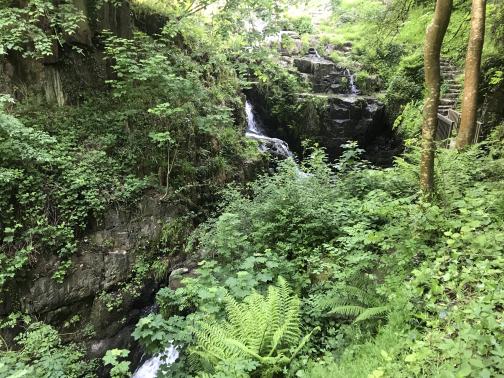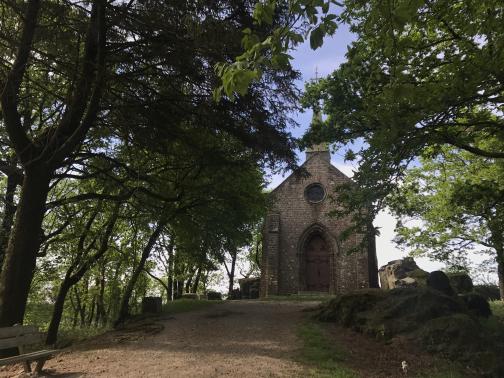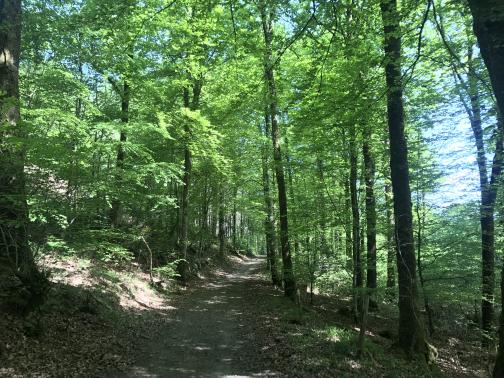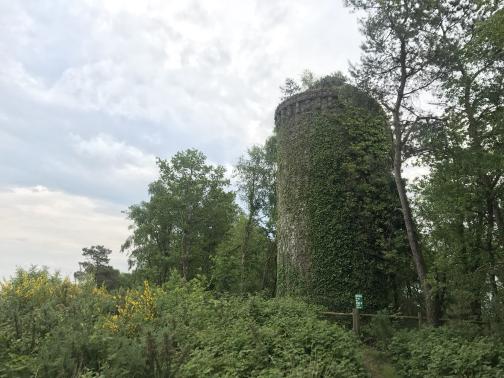pile.org
2017 E5 walk, day 40: Le Neufbourg to le Gué Safray
48°39′16.6″N
48°37′29.2″N
Although the map showed the trail crossing the Cance at the Grande Cascade (Big Waterfall), the trail markings unmistakably led me to the Petite Cascade (Little Waterfall, obviously), a series of short waterfalls in a valley. I love the sound of flowing water, and the valley was quite peaceful in the early morning.

Across in Mortain, I stocked up on groceries, went to Boulangerie Julien Patrick for bread and pastries, and then headed up out of town.
The trail headed out of Mortain to the east, up a hill called Montjoie, where there was a well-tended United States Army cemetery. An American battlion, giving it the the poetic name “Hill 314”, was surrounded here by a German counterattack shortly after the Normandy invasion, but managed to hold out until the Germans were driven back out a week later.

After Mortain, the trail was almost entirely isolated; it first wound east through the Forêt de Mortain.

From there, it continued winding east through the Forêt de la Lande Pourrie (“Forest of the Rotten Heath”, which I don’t remember being quite so bad as that). After the rotten heath, the trail ran almost perfectly due east, first along a ridge and then below it.

Near the settlement of le Gué Safray, I headed north to my night’s destination. At this point it had started raining, a steady, relentless drizzle. The directions I’d been given led me to another little settlement and then over a stream and across a recently-plowed field, turned mucky by the rain. The directions were clear, though, and I reached it with only a little discomfort. I won’t describe the place further, but if you’re planning to stay in a home in the commune of Lonlay-l’Abbaye, touch bases with me first.
